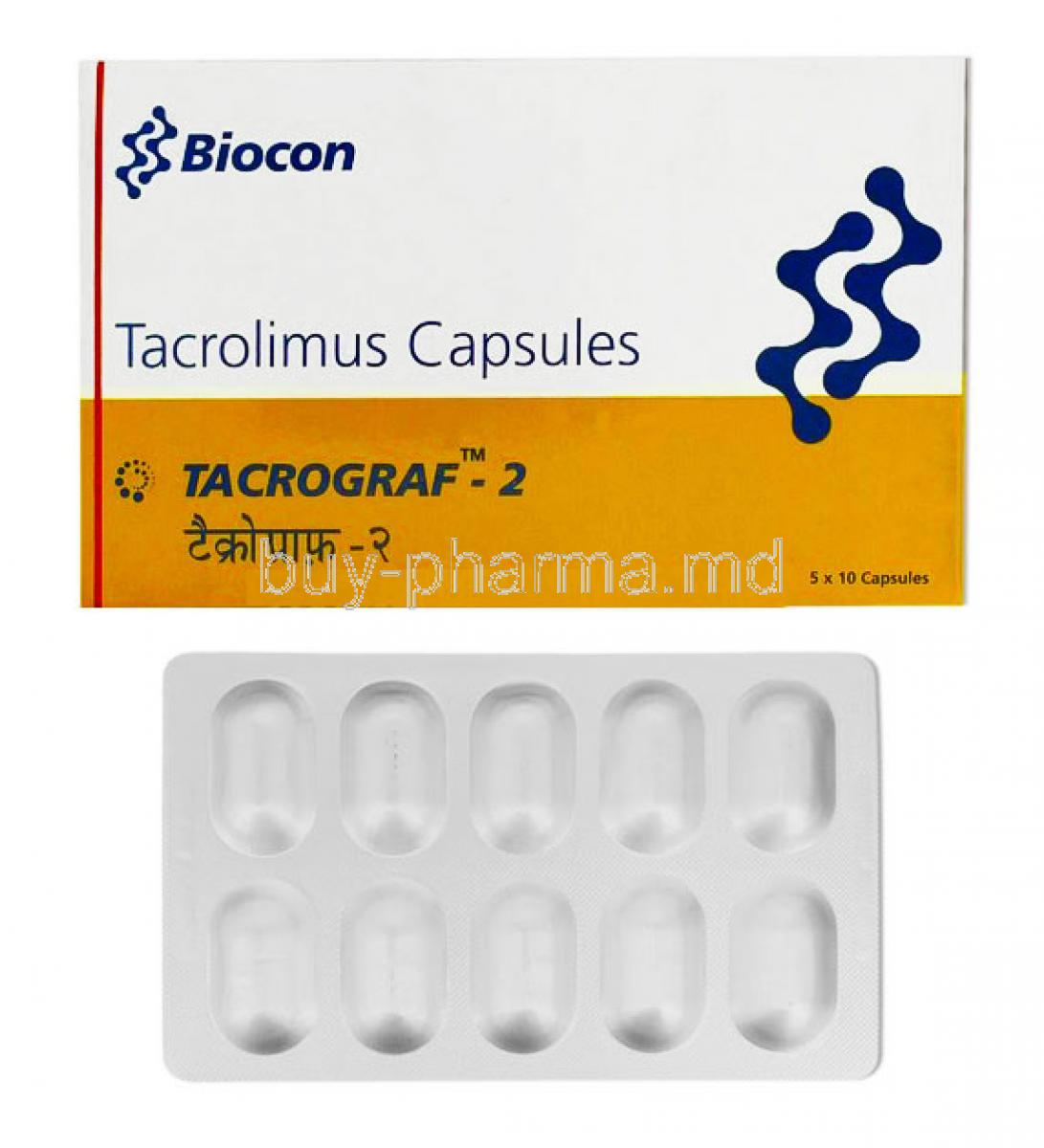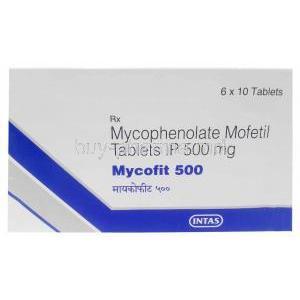Tacrolimus
- I. Introduction to Tacrolimus
- II. Tacrolimus: Uses and Applications
- III. Tacrolimus: Off-Label Uses
- IV. How Tacrolimus Works: The Mechanism of Action
- V. Composition of Tacrolimus
- VI. Dosage and Administration of Tacrolimus
- VII. Side Effects of Tacrolimus: An Overview
- VIII. Interactions with Tacrolimus
- IX. Warning, Contraindication, and Careful Administration
- X. Special Considerations: Administering Tacrolimus to Special Populations
- XI. Overdosage: Signs, Symptoms, and Management
- XII. Storage and Handling Precactions for Tacrolimus
- XIII. Important Precautions when Using Tacrolimus
I. Introduction to Tacrolimus
A. Brief overview and history of Tacrolimus
Tacrolimus, also known as FK506 or Fujimycin, is a drug used to suppress the immune system in organ transplant cases. Its purpose is to prevent the recipient's body from rejecting the organ.
Interestingly Tacrolimus is not a man-made substance but a natural compound produced by the bacteria strain Streptomyces tsukubaensis. The discovery of Tacrolimus took place in the 20th century, specifically in the 1980s when scientists found it in the soil of Mt. Tsukuba in Japan.
Researchers at Fujisawa Pharmaceutical Company ( Astellas Pharma) successfully identified and isolated this bacterial strain responsible for its production, which was a significant milestone for transplant medicine. The FDA granted approval for the use of Tacrolimus in 1994, revolutionizing healthcare by providing an innovative solution to combat organ rejection among patients.
B. Medical classification and general purpose
Tacrolimus is categorized as a substance used in medicine. It falls into the class of drugs called calcineurin inhibitors because it works by inhibiting the enzyme calcineurin.(1)
- The main purpose of Tacrolimus is to prevent organ rejection after transplantation. It is widely used in heart, liver, kidney, and other organ transplants to lower the risk of rejection by suppressing the recipients response.(2)
- Apart from its purpose Tacrolimus is also utilized for managing certain skin conditions like atopic dermatitis (eczema) and psoriasis. When applied as an ointment it can alleviate these conditions by reducing inflammation and itchiness.(3)

Eczema
The introduction of Tacrolimus has been a breakthrough in medical science, particularly in the field of transplant medicine. Its crucial role in preventing organ rejection and improving the prognosis of transplant patients has established its importance in the pharmaceutical industry. Additionally, its additional applications for conditions highlight its versatility and usefulness.
1. MayoClinic - Tacrolimus Oral Route
2. National Library of Medicine - Tacrolimus
II. Tacrolimus: Uses and Applications
A. Standard therapeutic uses
Tacrolimus has become highly regarded in the field due to its impressive effectiveness in preventing organ rejection. This makes it an essential component of the treatment plan after transplantation procedures, including kidney, heart, and liver transplants.
The recommended dosage for adult patients usually falls between 0.1mg to 0.2mg per kilogram of body weight per day, depending on factors like the organ transplanted, the patient's overall health, and other considerations.
It's important to note that Tacrolimus is not used as a treatment but is typically combined with other immunosuppressive medications, like corticosteroids.
B. Treatment of specific diseases and conditions
While Tacrolimus is widely used as a measure in organ transplantation, it also offers significant benefits in the treatment of specific diseases. One such condition is dermatitis, where Tacrolimus ointment (typically available in concentrations of 0.03% or 0.1%) has emerged as an effective alternative when traditional therapies fail to deliver results.
It helps reduce inflammation and alleviate itchiness associated with this skin disorder. Moreover, Tacrolimus has shown outcomes in managing severe cases of psoriasis, particularly when conventional treatments have fallen short.
However, it's important to note that the off-label use of Tacrolimus for these conditions is not universally approved and should always be supervised by a medical professional.
C. Extended applications and potential benefits
The application of Tacrolimus extends beyond its established uses, with research exploring its potential in other therapeutic areas. Recent studies have investigated whether Tacrolimus could effectively treat bowel diseases like Crohn's disease and ulcerative colitis.
By leveraging its properties, the drug shows promise in controlling the immune response responsible for inflammation in these conditions. Additionally, researchers are examining its role in managing conditions such as rheumatoid arthritis and certain ocular conditions like uveitis.
While these potential uses are still being explored, the proven immunomodulatory effects of Tacrolimus suggest a range of therapeutic applications.
To sum up, the story of Tacrolimus is one—a journey that started with organ transplantation and expanded to include various skin conditions showcasing the dynamic and ever-evolving nature of pharmaceutical science.
III. Tacrolimus: Off-Label Uses
A. Investigation into novel uses
In times there has been a surge of scientific research aimed at discovering unconventional or off-label applications for Tacrolimus. This interest stems from its immunosuppressive properties and its potential to regulate immune responses in various diseases.
Most studies have focused on conditions with autoimmune components, as Tacrolimus has shown promise in modulating the immune system. Ongoing investigations are centered around diseases such as lupus erythematosus, Behçets disease, and inflammatory bowel diseases.
- Regarding bowel disease, initial studies indicate that Tacrolimus could be a powerful therapeutic agent for Crohn's disease and ulcerative colitis – two forms of inflammatory bowel disease. Researchers are exploring how it can help manage the immune response observed in these conditions.
- There have also been studies suggesting that Tacrolimus may hold potential in treating lupus erythematosus, which is a systemic autoimmune disease.
- Similarly, Behçets disease – an inflammatory disorder – is being considered as another candidate for possible treatment with Tacrolimus.
However, extensive research is required before any definitive conclusions can be drawn. It's important to note that investigations into these applications are still at an early stage. As a result, the use of Tacrolimus for these conditions is not yet widely accepted or approved by medical authorities.
B. Successes and limitations of off-label application
The use of Tacrolimus for unapproved purposes has shown results and significant limitations. On one side, Tacrolimus ointment has proven to be highly effective in treating eczema and psoriasis, surpassing traditional treatments and offering hope to those with these conditions.
However, it's important to note that the off-label use of Tacrolimus comes with risks. Since the drug suppresses the system, it can increase the chances of infections and cancers.
Additionally, some patients may experience kidney or nerve toxicity due to its usage. These concerns highlight the need for monitoring when Tacrolimus is used outside its approved indications.
Moreover, the costliness of Tacrolimus and the requirement for monitoring blood levels pose limitations on its off-label usage. Nevertheless, researchers are motivated to explore and conduct experimental trials on Tacrolimus's potential in managing complex diseases.
The off-label applications of Tacrolimus exemplify both opportunities and challenges in repurposing drugs. While they offer therapeutic possibilities, they also emphasize the crucial role of rigorous scientific evaluation and regulatory oversight.
IV. How Tacrolimus Works: The Mechanism of Action
A. Overview of the drug's effect on the body
Tacrolimus, a medication that suppresses the immune system works by reducing the body's immune response. Its main purpose is to prevent the rejection of a transplanted organ by regulating the activity of the system.
It does this by interfering with the communication pathways, within cells, particularly T cells, which hinders their ability to react to foreign tissues or cells.
B. The science behind the drug's efficacy
From a perspective, Tacrolimus works by blocking the activity of an enzyme called calcineurin. Under some circumstances, calcineurin plays a crucial role in activating T cells, which are essential for mounting an immune response.
However, Tacrolimus forms a complex with another protein called FKBP 12 which binds to calcineurin and prevents it from functioning. By inhibiting calcineurin, Tacrolimus stops the Nuclear Factor of Activated T cells (NF AT) from moving into the nucleus.
NF AT is responsible for activating genes involved in T cell activation and proliferation, so inhibiting it effectively suppresses the response. This disruption in communication within the system is what makes Tacrolimus an effective medication for suppressing the immune system and helping individuals with transplanted organs.
C. Specific impact on the immune system
Tacrolimus, being an immunosuppressant, has an influence on the immune system. Its primary function is to inhibit the activity of T cells, which ultimately weakens the body's ability to initiate a response.
This controlled response helps prevent the rejection of organs by hindering the immune system's recognition and attack on the foreign organ.
While this impact on the system proves beneficial for organ transplantation, it does carry a risk of heightened vulnerability to infections and certain types of cancer due to reduced immune vigilance.
V. Composition of Tacrolimus
A. Chemical composition and structure
Tacrolimus, which is also referred to as Fujimycin or FK506, belongs to a group of compounds known as macrolides. It has an intricate chemical makeup consisting of a lactone ring composed of 23 members, with three pyran rings, one of which is a ketal. Additionally, it contains other functional groups.
B. Production process
Interestingly Tacrolimus is not artificially manufactured in a laboratory. Rather it is derived through a process of fermentation by a strain of bacteria called Streptomyces tsukubaensis. This particular bacteria, which is naturally occurring in the soil of Mt. Tsukuba, in Japan produces Tacrolimus as a byproduct of its metabolic activities.
C. Available forms and preparations
Tacrolimus comes in forms that cater to the specific requirements of patients. These forms include capsules primarily used to prevent organ transplant rejection, ointments for addressing skin conditions like eczema and psoriasis, and an injectable version intended for hospital use in managing organ rejection.
VI. Dosage and Administration of Tacrolimus
A. Standard dosage guidelines
The recommended amount of Tacrolimus may differ depending on the organ transplant. Typically initial doses range from 0.1mg to 0.2mg per kilogram of body weight per day. It's worth noting that the dosage of Tacrolimus is tailored to each individual and can be modified based on factors like blood drug levels, kidney function, and any potential side effects.
B. Adjustments for specific patient groups
Dosage adjustments might be necessary for groups of patients. For example, individuals with impaired kidney function might need doses because their bodies clear the drug at a slower rate. Likewise, patients taking medications that could interact with Tacrolimus might require dose adjustments to prevent any possible drug interactions.
C. Instructions for proper administration
It would be best if you took Tacrolimus capsules by mouth once or twice a day. Its recommended to take the medication, whether with or without food. To ensure the benefit, it's important to take the drug at the same time(s) every day.
Always follow the instructions and dosage provided by your healthcare provider, as they will monitor your blood levels and any potential side effects regularly.
On the hand, Tacrolimus ointment is meant for external use only. Apply a layer of it on the affected areas of your skin. The frequency of application may vary depending on how severe your condition's what your healthcare provider advises.
VII. Side Effects of Tacrolimus: An Overview
A. Most common side effects and their frequency
Tacrolimus, similar to any medication, can have side effects. The frequently observed adverse reactions typically consist of ;
- Headaches, which are experienced by approximately 50% of patients.

Person Suffering with headache
- Insomnia affects around 40% of individuals
- Nausea is reported in 45% of cases
- Diarrhea occurs in 35-55% of people.
It's worth mentioning that these side effects are generally mild and temporarily subside as the body adapts to the medication.
B. Severe and rare side effects
Although Tacrolimus commonly causes side effects, there are also rare but more serious adverse effects. These can include ;
- Kidney damage, which is particularly concerning due to its long-term consequences.
- Increased blood pressure, which can contribute to disease.
- The immunosuppressive nature may make individuals more susceptible to infections.
- Possibility of developing lymphoma and skin cancer with prolonged use.
These significant side effects highlight the importance of monitoring and regular follow-ups with healthcare providers while undergoing Tacrolimus therapy.
C. Managing side effects: recommendations and precautions
Managing the side effects of Tacrolimus typically requires a combination of approaches. This can include adjusting the dosage addressing symptoms, and making lifestyle changes.
It's important to inform your healthcare provider about any side effects you experience. For milder symptoms like headaches or nausea, over-the-counter remedies might offer relief.
In severe cases, it may be necessary to reduce the Tacrolimus dosage or switch to a different medication. If repeated infections occur due to immunosuppression, your doctor might consider starting prophylactic antibiotic therapy.
VIII. Interactions with Tacrolimus
A. Drug-drug interactions
Tacrolimus has the potential to interact with a range of other medications, which could affect how well it works or increase the chances of experiencing negative side effects. Specifically, there are drugs that can impact the levels of Tacrolimus in the bloodstream by affecting the liver enzymes responsible for its metabolism. These drugs include;
- Antibiotics and antifungal medications like erythromycin and ketoconazole which have the potential to raise Tacrolimus levels.
- Antiepileptic drugs such as phenytoin and carbamazepine might lower Tacrolimus levels.
- Calcium channel blockers, like verapamil, can lead to increased concentrations of Tacrolimus.
B. Food and drink interactions
The way Tacrolimus is absorbed can be affected by the food and drinks you consume. It is generally advised to take Tacrolimus either with or without food but not in a back-and-forth manner in order to prevent fluctuations in drug levels. It's best to steer off grapefruit and grapefruit juice since they have the potential to raise Tacrolimus blood levels, which could result in toxicity.
C. Other potential interactions to be aware of
In addition to interactions with food and drugs, it's important to consider how certain health conditions can affect the effectiveness and safety of Tacrolimus therapy.
For example, liver disease can impact how Tacrolimus is metabolized, while kidney disease may worsen due to the nephrotoxic effects of Tacrolimus.
As a result, close monitoring and adjustments in dosage are necessary when undergoing Tacrolimus treatment for these conditions.
IX. Warning, Contraindication, and Careful Administration
A. Comprehensive warning for specific populations
Certain populations may have a chance of experiencing negative effects when using Tacrolimus treatment. These groups include;
- Older adults are likely to have kidney damage, infections, and malignancies in this age group.
- In pregnant and breastfeeding women, Tacrolimus has the ability to pass through the placenta and be present in breast milk, which could potentially impact the fetus or newborn. Therefore its usage should only be considered if the potential benefits outweigh the risks.
- Individuals with liver disease; Since Tacrolimus is processed in the liver, people with liver disease might require dosage adjustments and careful monitoring.
B. Contraindications: when to avoid Tacrolimus
It is important to avoid using Tacrolimus if you have any allergies to the drug or any of its ingredients. Additionally, because there is a risk of developing infections and malignancies, with prolonged use it is advised to be cautious when using Tacrolimus if you have a history of chronic infections or malignancies.
C. Guidelines for careful administration
Due to the possibility of side effects and interactions, it is important to use caution when administering Tacrolimus. Regular monitoring of Tacrolimus blood levels, kidney function, and liver function may necessitate adjustments to the dosage, before starting any medication while on Tacrolimus therapy, it is crucial to check for potential interactions.
Ensuring that patients are educated about the side effects recognizing warning signs of complications, and emphasizing the importance of adhering to the treatment plan are all key aspects in safely administering Tacrolimus.
X. Special Considerations: Administering Tacrolimus to Special Populations
A. Elderly patients: benefits, risks, and precautions
The use of Tacrolimus in patients requires careful consideration. While its ability to suppress the system can be helpful in managing certain conditions, it's important to note that elderly individuals are more vulnerable to potential side effects.
These include an increased risk of infections due to a weakened system, a higher likelihood of kidney damage because aging affects renal function, and an elevated risk of hypertension and other cardiovascular complications that are more common among this population.
As a result, thorough clinical monitoring is essential. Adjustments to the dosage should be considered to ensure both the effectiveness and safety of the medication.
B. Pregnant women and nursing mothers: safety profile and recommendations
Tacrolimus falls under the FDAs Category C classification, which means that its potential risks during pregnancy cannot be completely ruled out. Although animal studies have shown harm to the fetus, there is a lack of well-controlled studies on humans.
Nevertheless, in some cases, the benefits of using this drug during pregnancy may outweigh the potential risks. It's worth noting that Tacrolimus can be passed into breast milk. So far, no significant negative effects have been reported in infants
However, it is still recommended to exercise caution. The decision on whether to continue or discontinue the medication or stop nursing should take into account the mother's health and well-being.
C. Pediatric administration: dosage, efficacy, and safety
Administering Tacrolimus to patients can be challenging due to certain factors. This medication is primarily used to prevent organ rejection in children who have undergone liver, kidney or heart transplantation.
Although its effectiveness has been proven, there is research to determine the safest dosage and refine its safety profile. When giving Tacrolimus to patients, it is crucial for healthcare professionals to rely on their clinical expertise and closely monitor the patient's response. Starting with doses and carefully tracking drug levels and potential side effects are essential for optimal treatment.
XI. Overdosage: Signs, Symptoms, and Management
A. Recognizing signs of Tacrolimus overdose
Taking much Tacrolimus can result in experiencing symptoms that indicate an increase in its pharmacological effects. These symptoms may include feelings of nausea, vomiting, headaches, dizziness, and excessive fatigue. In serious cases, there could be kidney damage, noticeable changes in urine volume or color, as well as neurological problems like tremors and seizures.
B. Steps to take in the event of overdose
If you suspect an overdose, it's crucial to seek medical help. Make sure the person's airway breathing and circulation are taken care of while waiting for assistance. Only induce vomiting if specifically instructed by a healthcare professional. Make sure to inform the team about all the details regarding the medication taken, including dosage and timing.
C. Clinical support and interventions for overdose
The treatment of an overdose of Tacrolimus mainly involves providing support, monitoring signs, and managing symptoms. In some instances, hospitalization might be necessary. Although hemodialysis can help decrease the level of Tacrolimus in the bloodstream, its effectiveness is somewhat restricted due to the drugs binding to cells and plasma proteins. However, each case requires an approach, and the doctor, in charge, will decide on the most suitable plan of action.
XII. Storage and Handling Precactions for Tacrolimus
A. Ideal storage conditions
To ensure that Tacrolimus remains effective for its intended purpose, it is important to store it. The medication should be kept at a temperature range of 20°C to 25°C (68°F to 77°F), which's room temperature.
However, it is acceptable to have periods where the temperature may vary slightly between 15°C to 30°C (59°F to 86°F). It is crucial to store the medication in a location away from sources of heat and direct light exposure.
B. Steps to ensure the longevity and efficacy of the drug
To ensure that Tacrolimus remains effective and lasts for a time, it is important to follow these crucial steps;
- Always keep the medicine in its packaging until you are ready to use it.
- Avoid freezing the medication at all costs.
- After opening, make sure to close the container after each use.
- Dispose of any medicine that has expired and looks discolored. Shows any signs of physical deterioration.
C. Important handling precautions to maintain safety
When working with Tacrolimus, it's important to follow these safety precautions;
- Before and, after handling the medication make sure to wash your hands
- Never share your medication with others, even if they have symptoms.
- Avoid getting the medication in your eyes. If accidental contact occurs, rinse them thoroughly with water.
Remember to prioritize safety when dealing with Tacrolimus.
XIII. Important Precautions when Using Tacrolimus
A. Common precautions to take when using this medication
It's important for people taking Tacrolimus to take precautions to minimize the risk of experiencing side effects or adverse reactions.
- Make sure you regularly check in with your healthcare provider to monitor the levels of the medication in your system and to assess its effectiveness.
- Also, inform your healthcare provider about any medications, vitamins, or supplements you are currently taking.
- Additionally try to avoid exposure to sunlight and ultraviolet (UV) light because Tacrolimus can increase your skins sensitivity, to them.
B. Precautions for patients with specific health conditions
Special care should be taken when administering Tacrolimus to patients with health conditions.
Close monitoring is necessary for individuals with kidney dysfunction as Tacrolimus has the potential to worsen kidney problems.
Patients who have liver disease may need adjustments in their dosage due to changes in drug metabolism.
It is important for individuals, with a history of hypertension and cardiovascular diseases to exercise caution while using Tacrolimus as the medication can increase blood pressure.
C. Steps to take if adverse reactions occur
If you experience any side effects while using Tacrolimus it is important to take the following actions;
- Contact your healthcare provider. Seek immediate medical assistance without delay.
- Do not make any changes, to the medication dosage without consulting a healthcare professional.
- Keep a record of your symptoms to provide a comprehensive account to your healthcare provider.































